You can collect recurring payments for your business using Paystack even if you don't have a website, all you need to use is Paystack Payment Pages. Follow the steps below to get started:
- First, you will need to go to the Payment Pages menu on your Paystack dashboard.
- Click on 'New Page', which would load a pop-up asking you to choose between 'One-time Payment', 'Subscription Payment' and 'Product Payment'.
- Select 'Subscription Payment'.
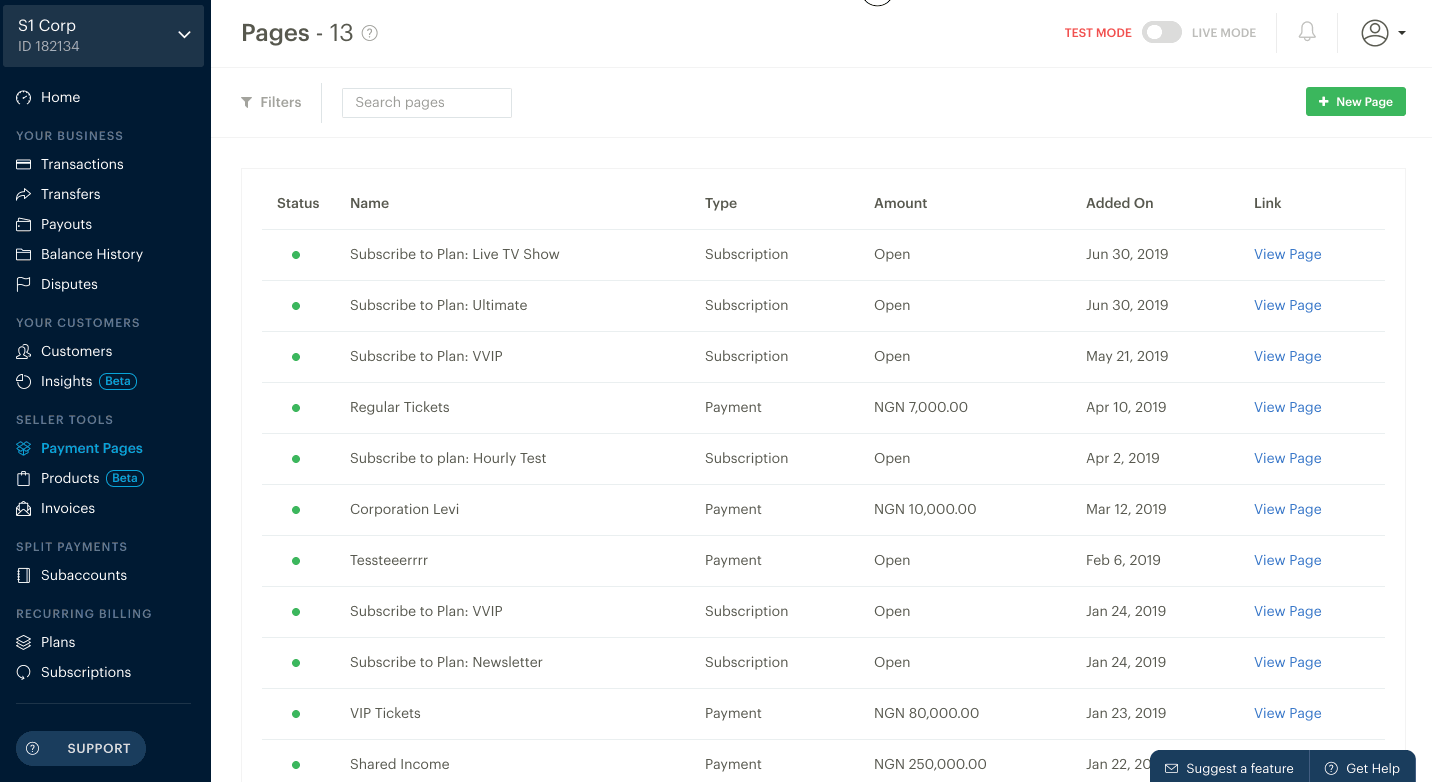
- You will then be given some plan options which we would explain.
Payment pages for recurring payments work a little differently than payment pages for one-time payments: you'll need to create a Subscription Plan, and then connect that to a Payment Page. These are the plan options you will be presented with:
- One of my existing plans - Use this if you've already created a subscription plan, for example, on the Subscriptions page of the dashboard.
- I want to create a new plan - Use this if you've like to quickly get set up. You'll create both the subscription plan as well as the payment page in the same step.
- Let my customers create the plan - Use this if you'd like customers to set the amount they'll pay as well as the period. A use case, for example, is an NGO that would like to allow donors to set their own donation amount, and whether they'd like to pay on an hourly, daily, weekly, or monthly, or annual basis.
Important to Note
What are the available recurring payment intervals?
Using Payment Pages, your customers can pay you at the following intervals: hourly, daily, weekly, monthly, quarterly, biannually and annually.
We shall now go over creating recurring payments with each of these plan options.
Choosing the 'One of my existing plans' option
- On the New Page popup, click 'One of my existing plans'.
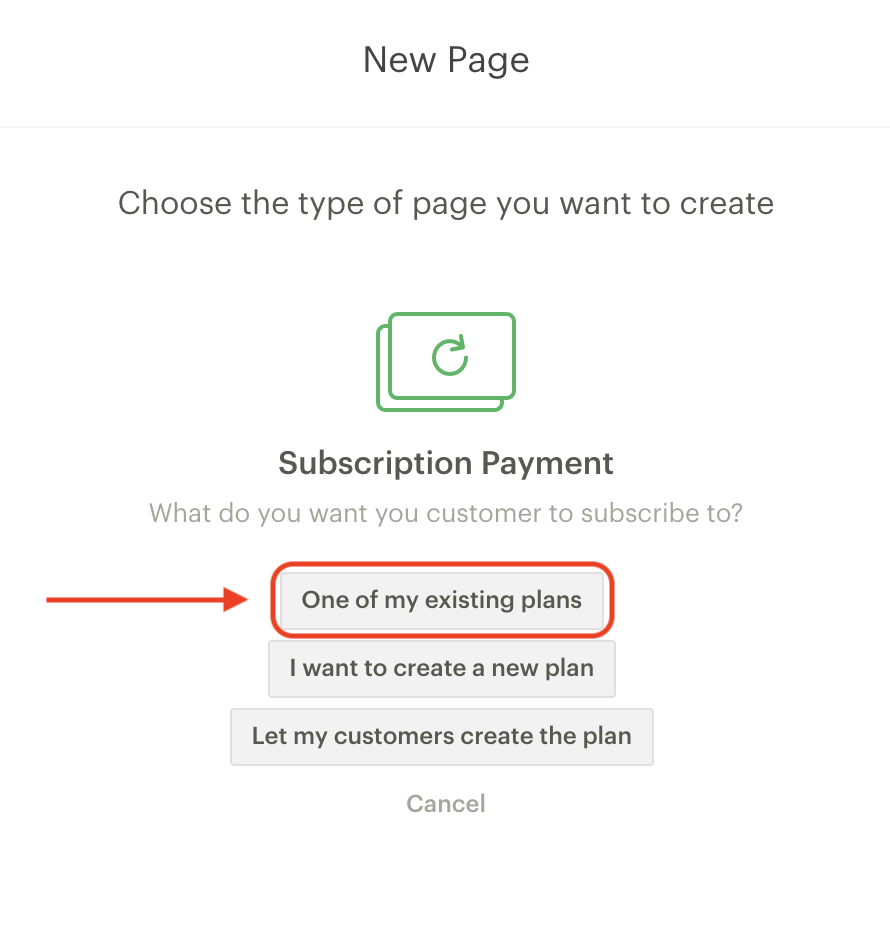
- You'll be presented with a list of subscription plans that were previously created for your business.
- Simply select one of these plans, name your subscription page and complete the remaining optional fields to your taste.

- When you are done, click on 'Create'.
- You have successfully created a subscription page from an existing plan.
Choosing the 'I want to create a new plan' option
- On the New Page popup, click 'I want to create a new plan'.

- Create a plan to your specifications.
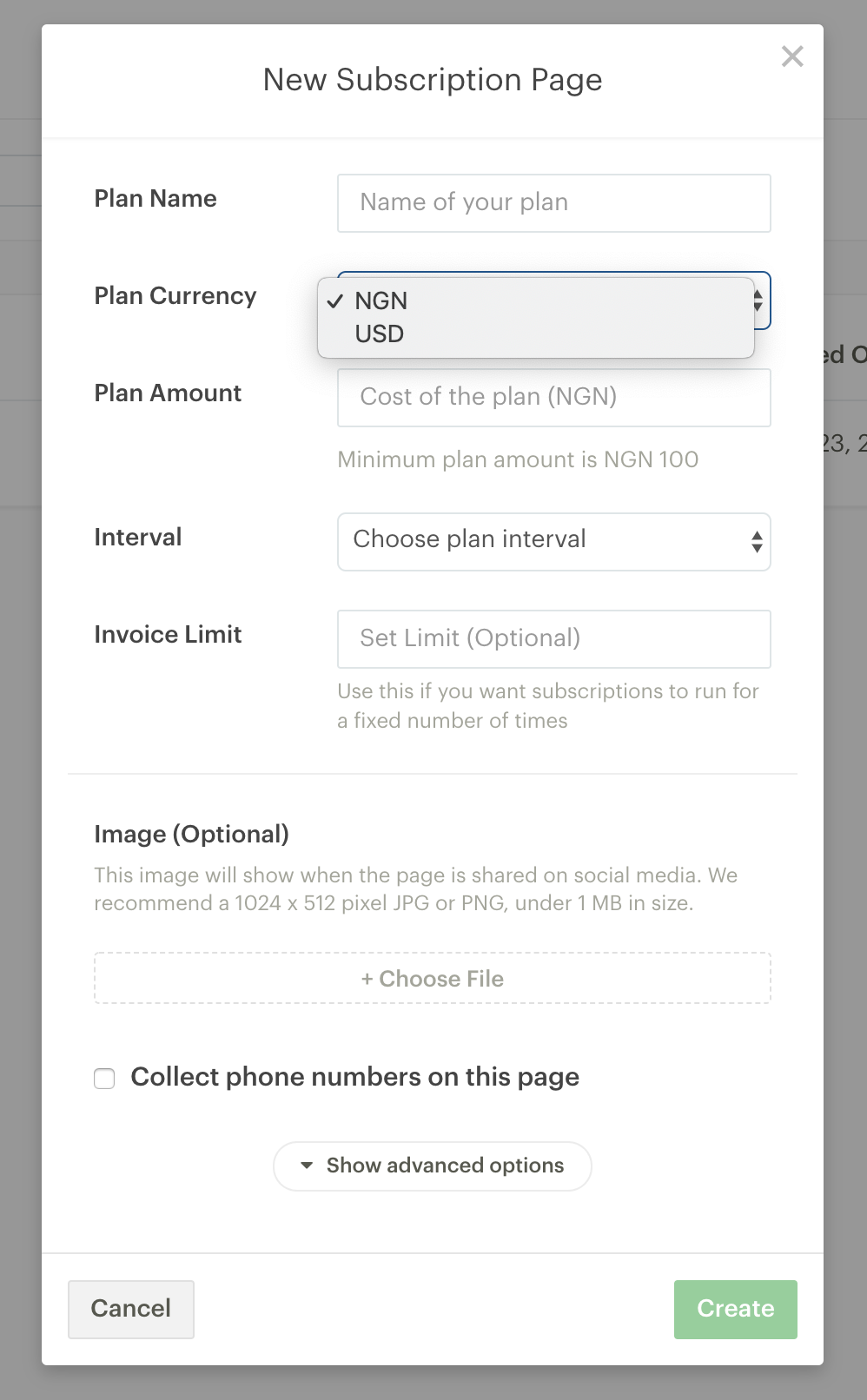
- Plan Name - This is the title at the top of your Payment Page. It's public, so it's a good idea to make the name descriptive (eg. Monthly grocery delivery)
- Plan Currency - Choose between NGN and USD
Important to Note
You can only select USD if you have enabled USD on your Paystack business.
- Plan Amount - This is how much the customer will be charged at the desired interval frequency
- Interval - You can set the following payment interval frequency: hourly, daily, weekly, monthly, quarterly, biannually and annually.
- Invoice Limit - Use this if you set a maximum number of times that the person can be charged. For example, if you set the interval to "Monthly" and enter an Invoice Limit of 3, the customer will be charged three times, and then never again.
- Collect phone numbers on this page - By default, Paystack collects email addresses of all customers. Clicking this checkbox will include a mandatory phone number field that the customer will need to fill out to complete their subscription.
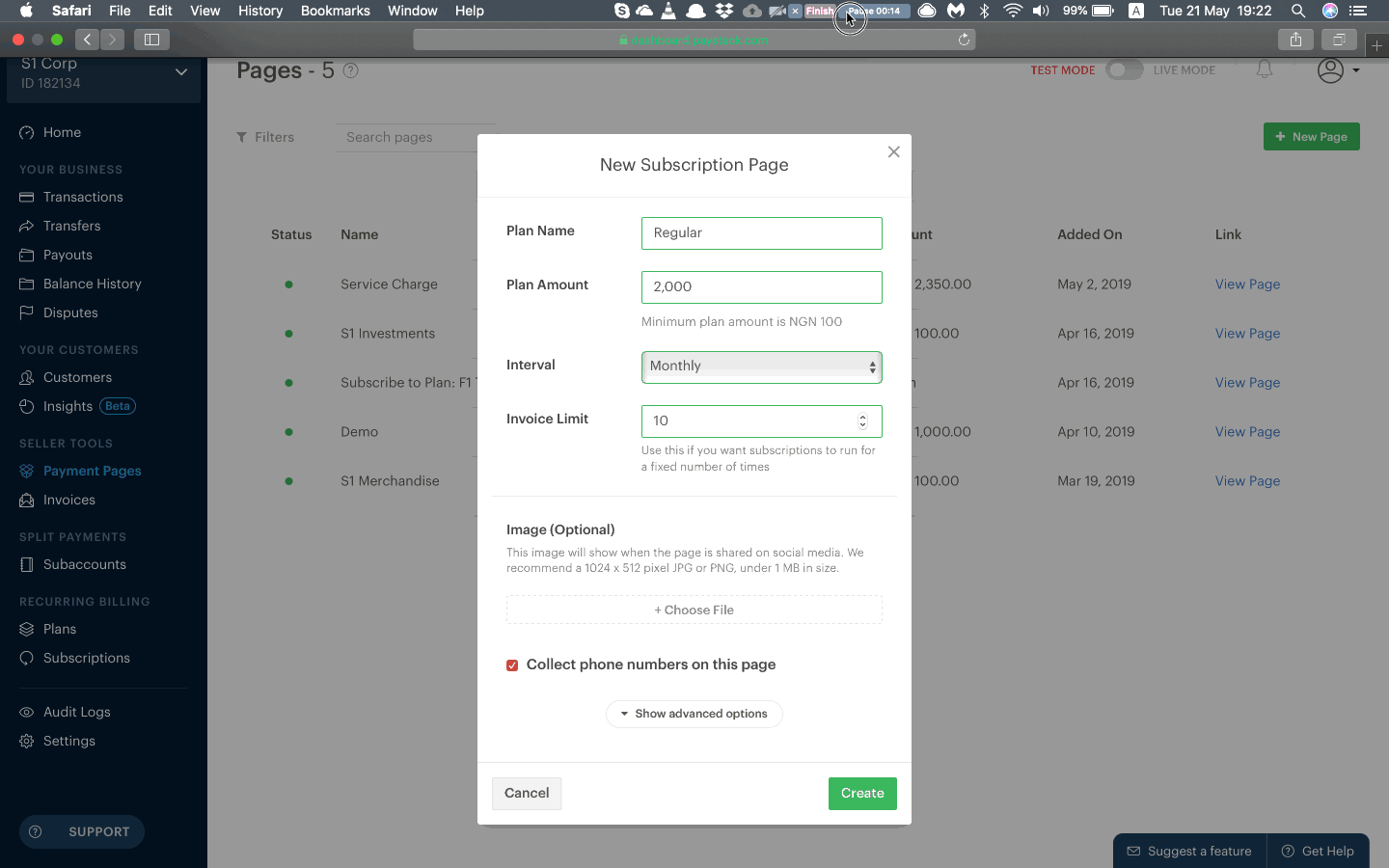
When you are done completing all the fields, simply click 'Create' you would have successfully created a new plan and subscription page.
Choosing the 'Let my customers create the plan' option
- On the New Page popup, click on 'One of my existing plans'.
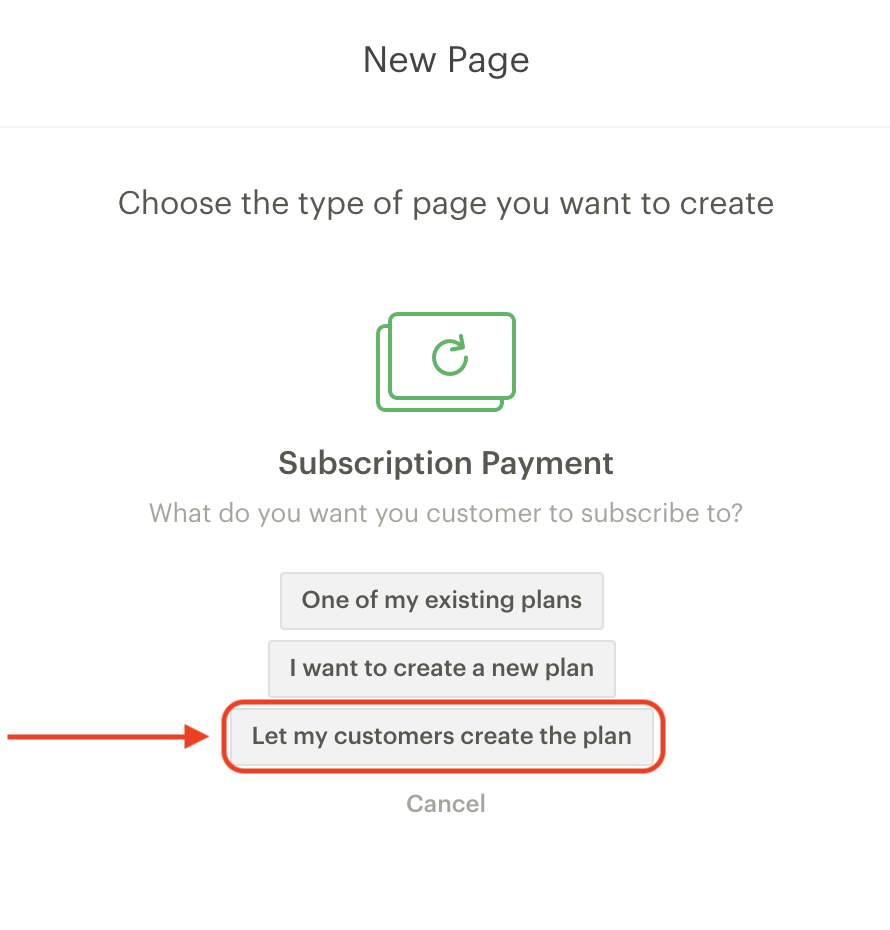
- You will need to fill some general information for this customisable plan
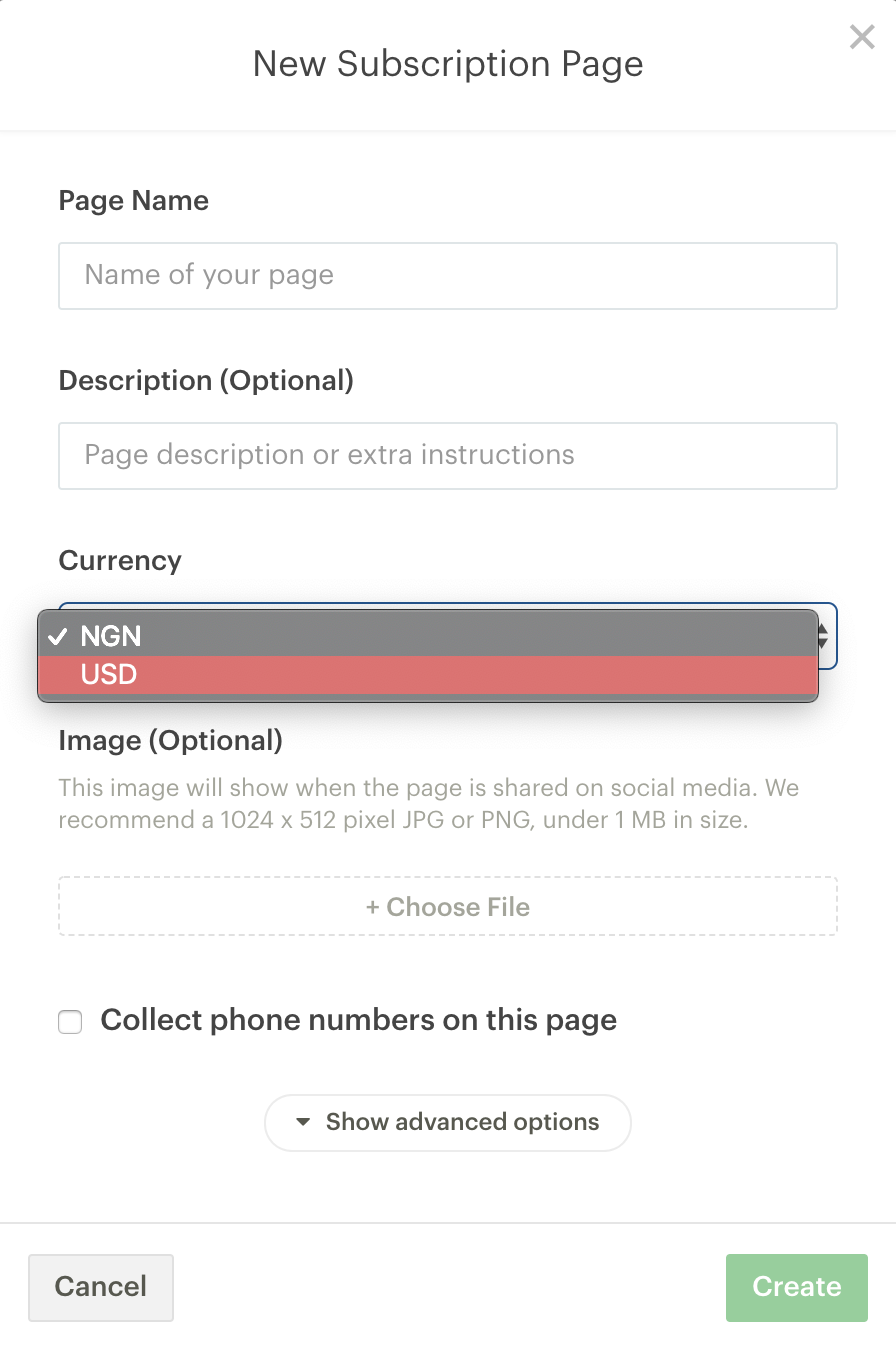
- Page Name - this is the title at the top of your Payment Page. It's public, so it's a good idea to make the name descriptive (eg. Monthly grocery delivery)
- Description - complete this option to provide more information to your customer. This is a good place to give a compelling description of the product or service, explain your return policy, or anything else that will compel customers to buy.
- Currency - Choose between NGN and USD
- Collect phone numbers on this page - By default, Paystack collects email addresses of all customers. Clicking this checkbox will include a mandatory phone number field that the customer will need to fill out.
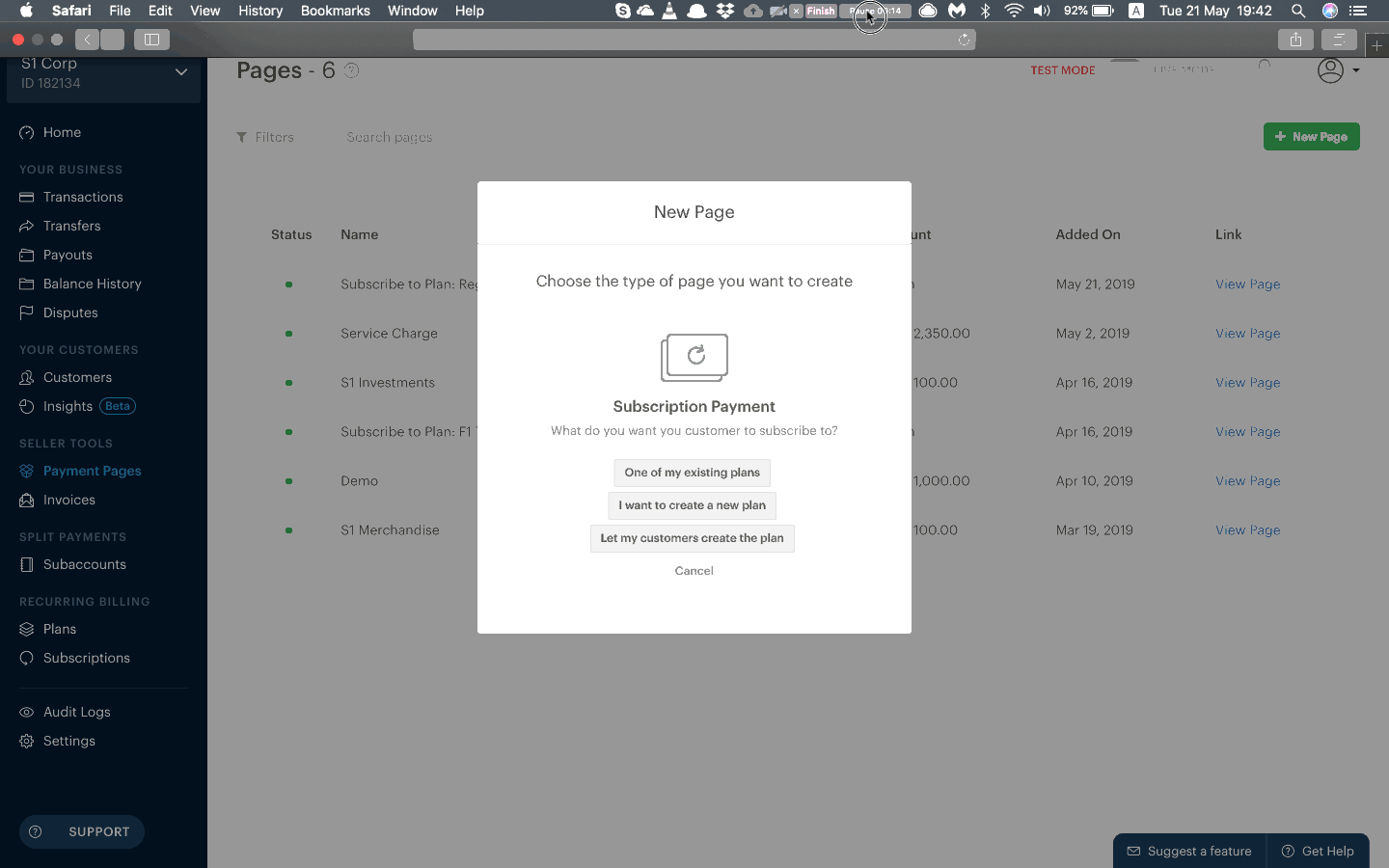
When you are done completing all the fields, simply click ' Create' you would have successfully created a customisable plan with a subscription page.
Can I further customise my plans?
Absolutely! There are more advanced ways to customise a plan, which can be accessed by clicking 'Show advanced options' when creating your plan. Here are the features you can add:
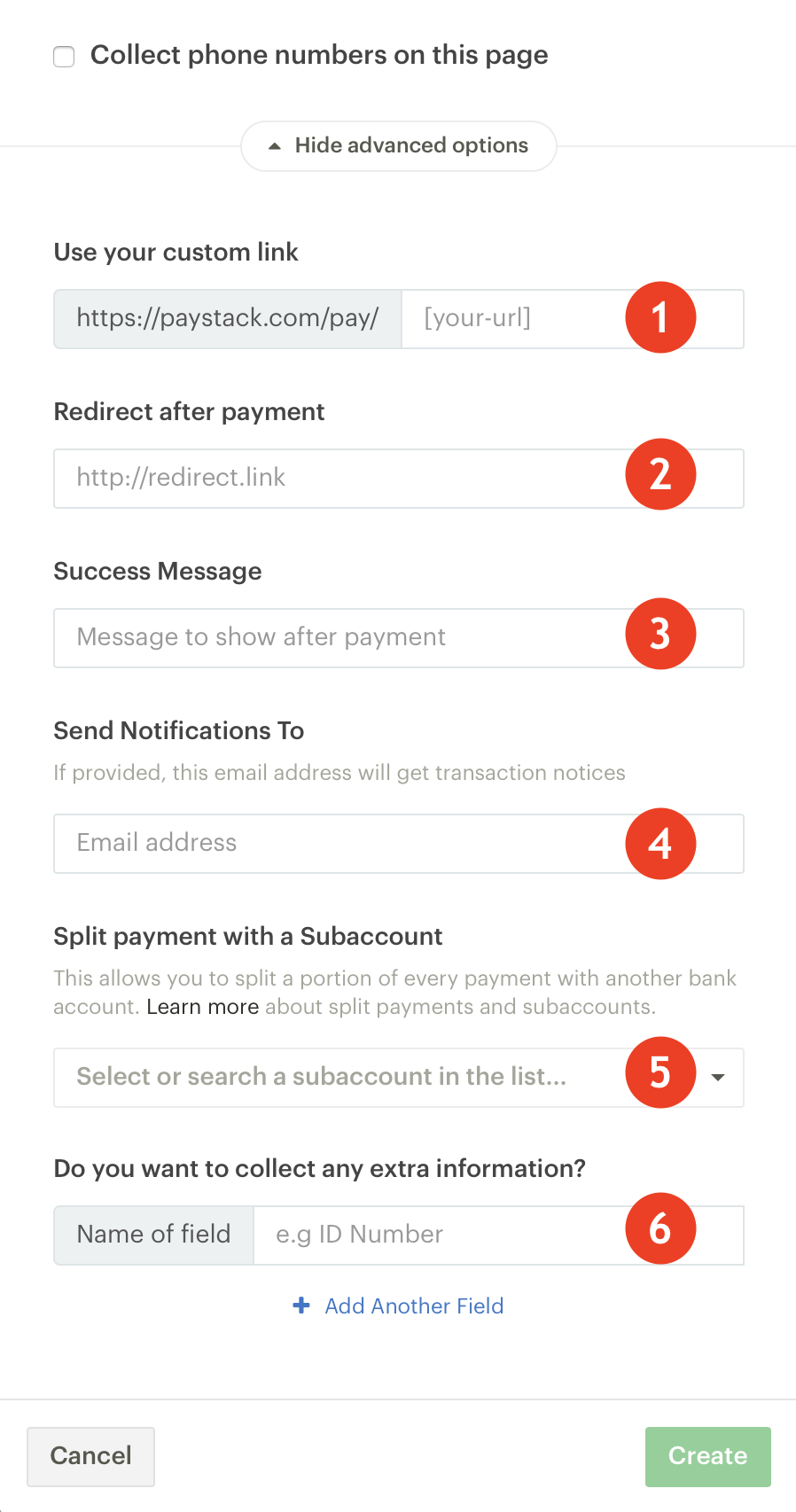
- Use your custom link - By default, Paystack automatically generates a link when you create a Payment Page. However, you're able to customise to the link to make it easier to remember and to give make your link look more professional and trustworthy. For example: paystack.com/pay/BellaShoes
- Redirect after payment - By default, after a customer completes a successful transaction, they remain on the post-purchase "Thank You" page. But if you wanted, you could make it so that right after customers purchase, they're taken to a different site. This is useful for things like:
- Sending customers to your social media page where they can follow you
- If you're selling digital content, you could redirect to an online folder where the customer could download the content
- Taking the customer back to the store page
- Success message - You can customize the message that the customer sees after they make a successful payment. You can use this opportunity to say thank you, or provide follow-up information.
- Send notification to - By default, transaction alerts are sent to the Business Email Address (this can be changed on the Settings page), but if you enter an alternate email address here, alerts about payments will go to this email address instead.
- Split payment with a subaccount - If you want to split the payments from this page with any of your existing subaccounts, you can select the subaccount and the split percentage here.
- Do you want to collect any extra information? - You can collect additional information from the customer such as ID Numbers, Addresses, and more.
Important to note
Custom fields are mandatory for customers: Please note that additional fields are mandatory, which means that the customer will be unable to complete the form without entering content into those fields.

Comments
0 comments
Article is closed for comments.